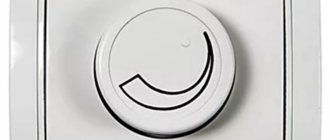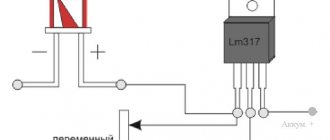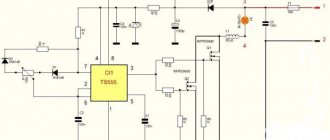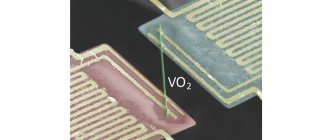It is now known that in this world everything can be measured, absolutely everything. The Universe and much else that surrounds a person is connected with dimensions. So, measuring speed, time, distance will not be difficult. There are special instruments for measurements. The science that deals with measurements is metrology. Metrology calculates all information with extreme accuracy. It is important to know in what units something specific is measured. For example, a person knows for sure that time can be measured in seconds, hours and even milliseconds. Speed can be measured in kilometers per hour, distance in meters or kilometers.
Units of measurement are commonly found in physics. Even from school, physics helps one learn about measurements. Using this science, you can convert any measurements to the SI system.
The importance of physics is very great; it has been used at all times. Even brightness can be measured using units of measurement . Science moves further and further, opens up new horizons, it does not stand still and develops. There are units of measurement that are outdated today:
- NIT,
- STILB,
- LAMBERT,
- APOSTILBE.
Light brightness characteristics
Brightness is the intensity of light emitted from a certain area of an object in a given direction (L=I/S).
Note! We are talking not only about emitted light, but also about reflected light.
Sun brightness
Surfaces with different reflective abilities under the same illumination have different brightness values. This is influenced by the coloring and reflective properties of objects.
This parameter of light emitted by a surface at an angle Ф is equal to the ratio of the beam strength (I) to the area of its projection (S).
Brightness
Neither the denominator nor the numerator of this ratio depends on the distance to the object, so this value is also not determined by it.
If the observed object is at an angle other than 90 degrees, the cosine of this angle is also taken into account in the calculations: L=Ia/(S*cosa).
When calculating the indicator for conventional incandescent lamps, it is taken into account that the projection of their surface has the shape of a circle. And for gas-discharge light sources it is represented by rectangles. For irregularly shaped objects, measurements may capture gaps between surface areas that do not emit light.
Brightness of some objects
On a note! Brightness should not be confused with illuminance, which is determined by the ratio of light density to the area of the illuminated object.
Where this knowledge may be needed
Many people like to solve crosswords and scanwords. The authors who come up with scanwords use unique terminology and increasingly want to confuse the reader. You need to try hard to figure out the exact answer. Do you think why you might need to know the unit of brightness? The scanword may well contain a similar question.
For example, this case. You need to solve the word from the crossword puzzle: EXCELLENT ACHIEVEMENT. To make it easier to guess this word, there is a hint - this is a unit of brightness of a luminous surface, the word itself consists of 3 letters. Using these clues you can easily determine what the word is. Answer to the crossword clue: NIT.
What devices to measure the brightness of light
When inspecting occupational health and safety regulations, brightness meters are used. These include exposure meters and special sensors.
The design of the devices is characterized by the presence of a viewing angle limiter (usually a tube, grille or lens). If their light reception area is rectangular, then there are two angles of coverage at once - one is located horizontally, the other is located vertically.
Instrument coverage angles
Additionally! Professional devices have sighting sights installed as standard.
The sensitivity of the device is directly dependent on the square of its coverage angle. The maximum distance from the brightness meter to the measurement point also depends on its technical characteristics.
Distance from the brightness meter to the measurement object
Note! If the maximum permissible distance is exceeded, foreign objects located in the vicinity of the light source enter the measurement field of the device.
The brightness of an object can be measured in two ways - direct and indirect. In the first case, the device directly measures the maximum and minimum parameters, in the second, the contrasts of lightness and illumination are assessed.
Lighting standards for apartments and residential premises
Compliance with current sanitary and building regulations prevents unnecessary strain on vision. Below are the control parameters for different types of premises (minimum value in lux):
- entrance group (apartment) – 50;
- dining room – 150;
- kitchen – 150;
- children's room – 200;
- corridor, shower room, restroom – 50.
After measurements, corrections are made taking into account the results obtained.
Something to remember! The level of illumination depends on the brightness of the source, the distance to the surface and the direction of the beam.
How to measure light brightness correctly
When testing light bulbs and other lighting devices, it is difficult to thoroughly determine their brightness level due to the roundness of their surface. Most often, this indicator is determined for monitors, displays and TV screens.
In order to obtain correct indicators, the following conditions must be met:
- Shield the lens from extraneous light sources. Indoor measurements can be taken in complete darkness.
- No shadow should fall on the measurement object (including from the device and the person taking the brightness readings).
Shadow on a brightness measurement object
- There should be nothing in the sensor's field of view other than the light source being measured.
- At the beginning and end of measurements, the voltage level in the network is checked.
- If there is a natural light source, the ratio of its illumination to this parameter cannot exceed 0.1.
- Measurements are taken under normal weather conditions.
You might be interested in How to choose a color temperature
Measurement procedure
Necessary procedure for measuring brightness level:
- Turn on the brightness meter and set it to measurement mode.
- Place it as close as possible to the light source, perpendicular to the rays (parallel to the surface).
Note! If the surface is hot, the distance to the measurement object should be at least 1 cm.
- When taking readings, the device must be in a static position.
- Take measurements at several points, then calculate the average value.
Monitor brightness measurement points
What is luminous flux and luminous efficiency
To properly understand this topic, it is necessary to clarify the specific terminology. Light is electromagnetic waves in the range from 360 to 840 nm. These boundaries cannot be called exact, since we are talking about the individual (unique) sensitivity of the organs of vision. However, to perform calculations, an average correction factor (k) is used. With its help, the radiation efficiency in daylight natural light is taken into account.
The formula shows how to calculate light:
Ф = k * V * Фм,
Where:
- Ф – luminous flux;
- V is a fixed coefficient of 683 lumens per watt (lm W), which is used to convert the calculation result to the standard of the international measurement system “SI”;
- FM is a flux of monochromatic radiation with a certain wavelength.
When considering the spectrum, the contribution of individual lines is summed up. Using the integral over a given range, the value of the continuous flow is calculated.
Formulas for calculating luminous flux
The speed of light in an ideal medium (vacuum) is almost 300,000,000 m/s. Some substances (diamonds) can reduce it by almost half. However, even in this case, when power is applied, the light source immediately performs its main functions.
To correctly answer practical questions, you need to know how much energy is consumed in the operating cycle. The assessment is made based on light output. This parameter shows how much luminous flux the device generates when consuming a certain amount of electricity per unit of time.
Light brightness standards
An indicator of over 160,000 candelas per m2 causes discomfort in the eyes and tearing. Therefore, lamp manufacturers increase the area of light sources (light bulb filament) due to large matte shades. This light is more pleasant and safer for the human visual organs, and does not have a negative effect on concentration.
Brightness standards according to GOST R 52870-2007
When measuring this indicator, take into account:
- When adapting to light, this value should be ≥ 10 cd/m2, to shade - no more than 0.01 cd/m2.
- On screens, this parameter for a monochrome image should normally be over 3,000 cd/m2, for a color image – 10,000 cd/m2 (at the same time, for each color more than 1,500 cd/m2).
- When determining this light indicator at different points on the screen, the difference between the maximum and minimum numbers is determined by the ratio of the first value to the second, and the value should be in the range from 0 to 0.7.
- Night brightness levels should be 2–100 times less than daytime ones.
Note! The brightness of monitors in the presence of external lighting is not standardized.
Monitor in ambient light
Light brightness is a very important parameter that affects a person’s vision and performance, and should not be neglected. Thus, for harmless work with the monitor indoors, you can install a brightness control on the device, which will change its indicators by 10–100 times, depending on the time of day and the presence of natural light.
You might be interested in this: Features of SMD capacitors
Candela, lumina, lux, what's the difference?
Units of physical quantities in lighting (GOST 8.417-81)
- luminous intensity
- in Candelas or CD; - brightness
- the amount of light emitted by a unit of body area, measured in cd/m2 or Candelas per square meter; - luminous flux
- in lumens or Lm; - the power of light as a flow of electromagnetic radiation
- in watts (W); - illumination
- the amount of light falling per unit area - in lux (or Lux); - luminosity
- the amount of light emitted per unit area - in lumens per square meter. m or Lm/m2.
Measuring light characteristics
Historically, for 200 years, only the eye was the reference light receiver, on the basis of which all assessments and measurements of luminous intensity, brightness and illumination were carried out. Of the entire huge optical radiation region (10 nm - 1 mm), only a narrow the spectrum band from 380 to 780 nm (light radiation) can be perceived by the human eye. Moreover, the sensitivity of the human eye, even within this spectrum, is not the same; it is maximum in the green region and sharply decreases towards the violet and red edges.
Focusing on the eye as a light receiver, a measurement system was introduced in which such influences that cause the same visual sensation are accepted as equal.
A function V() was constructed, which is called “spectral luminous efficiency”. Its graphical form is presented in Figure 1, and its tabular form is presented in Table 2.
Picture 1
The table shows that at a value of 550 Nm (green wavelength), energy efficiency is the highest. The physiological effect of 1lm is the same throughout the spectrum, but its energy “price” for the green region is 1/683 W, for violet - 1/62 W, and for raspberry-red - 1/6 W. Therefore, the eye is more comfortable in the green area; here the physical impact (“pressure”) on it is the least.
Various experiments gave results that showed that at a wavelength = 555 nm, radiation of 1 W corresponds to a luminous flux of 676 - 688 lm. Experimentally, scientists came to a relationship that made it possible to convert lumens into watts and back.
Candela
In 1979, the 16th General Conference on Weights and Measures adopted the definition of Candela Candela (from the Latin candela - candle) is one of the seven basic units of the International System of Units (SI). Candela is the luminous intensity in a given direction from a source of monochromatic radiation with a frequency of 540 * 10 Hz, having a radiation intensity in this direction equal to 1/683 W in a solid angle equal to one steradian. A radiation frequency of 540*1012 Hz corresponds to a wavelength = 555.016 nm in air under standard conditions, which for almost all purposes can be taken equal to 555 nm without affecting the accuracy of actual measurements.
(It canceled the previous complex measurement, previously depending on the black body, the solidification temperature of platinum (2042 K) and pressure 101,325 N/m2)
Candela's story
Candlestick measurement began in 1893 in Germany.
Name " Hefner candle"
", was proposed in 1884 by F. Hefner-Alteneck. The standard used was a specially designed wick lamp. Amylacetate was used as fuel.
Three years later, in 1896, the “ decimal candle”
", equal to 1.12 Hefner candles.
In 1909, the "decimal candle" was adjusted by one tenth - replaced by the " international candle"
", equal to 1.11 Hefner candles. The international candle was reproduced not with the help of a wick lamp, but with the help of special incandescent lamps
In 1948 a decision was made to adopt a new unit - Candela
. Candela was tied to a light standard with properties close to those of an absolutely black body (Planck emitter). The calculations involved, as previously written, thorium oxide, platinum, located at the solidification temperature (2046.6 K), and a normal with 1/60 cm of the emitting surface of the specified standard. The Candela introduced in this way was 1.005 times less than the international candle , i.e. approximately 1,104 Hefner candles.
Linking Candela to the spectrum visible to the human eye is the most logical option at that time. Although work is currently underway on a new version of the wording.
Using Kandel in tech. characteristics of light sources
In Candelas, the luminous intensity of directional light sources is often measured, for example, such as an LED in a 5mm housing, which usually has a lens from 10 to 160 degrees; to be more precise, the measurement is carried out in milliCandelas 1Cd = 1000 mCd. The Candelas number indicates how much light a point light source emits in one direction in which it shines most intensely.
For example, the ARL-4008UWC LED, at a current of 20 mA, has a brightness range of 1.2 - 1.6 cd;
LED ARL-10080PGC4-15 with a diameter of 10 mm has a brightness of 30-40 cd;
The red LED model ARL-10603URD-150mcd has a brightness of 0.15 cd.
Luminous intensity in Candelas of typical light sources:
| Source | Power, W | Approximate luminous intensity, Cd |
| Candle | 1 | |
| Modern (2016) incandescent lamp | 100 | 100 |
| Regular LED | 0,015 | 0,005 |
| Super bright LED | 1 | 25 |
| Ultra-bright LED with collimator | 1 | 1500 |
| Modern (2016) fluorescent lamp | 20 | 100 |
Derived units from Candela
The International System of Units (SI) has defined a set of seven basic units from which all other units of measurement are subsequently formed. These other units are called SI derived units
, they are also considered part of the standard.
Derived units can be expressed in terms of base units using mathematical operations - multiplication and division.
Photometric units of measurement such as Lumens and Lux are expressed through Candelas.
Lumens
Luminous flux (F)
is the light energy passing through a given surface per unit time, assessed by visual sensation:
Ф = W/t (luminous flux emitted per unit area of the source)
Lumen is taken as a unit of luminous flux
(lm). One lumen is equal to the luminous flux emitted by a point isotropic source, with a luminous intensity equal to one Candela, into a solid angle of one steradian.
1 lm = 1 cd • 1 sr
The number of lumens indicates how much light a point light source emits in all directions
. The higher the number of lumens, the more light.
The solid angle covering the entire space around the source is equal to 4π • sr, because the total surface area of a sphere of unit radius is 4π. Accordingly, the total luminous flux created by an isotropic source, with a luminous intensity of one Candela, is equal to 4π lumens.
To convert lumens to candelas
, and vice versa, you can use the formula:
F v =I 2π(1-cos(α))
,
where: Fv - luminous flux; Iv—luminous intensity; α - half-brightness angle
Let's take a light source and impose an X Y coordinate system on it. Point (a) is the origin of coordinates. Angle < fah is the apparent angle of the glow. The maximum brightness of the light will be at point (e) - this point is directly perpendicular to the source. Moving around the circle from point (e) to the left and right, the brightness will decrease. And at some point (c) and point (b) the brightness will be half the brightness of point (e). The angle < bac will be called the half-brightness angle. And the closer it is in size to the visible angle of the glow, the better. There is also light outside this angle, but the characteristic of the half-brightness angle is only the angle < ba c.
Luminous flux in Lumens of various light sources
The table below shows comparative parameters in Candelas and lumens of some light sources, but depending on the specific instance (manufacturer, materials), the values may differ.
| Light source type | Luminous flux (lumens) | Luminous intensity (Candel) | lm/watt |
| Incandescent lamp 40 W | 415 | 35 | 10 |
| Incandescent lamp 100 W | 1550 | 1300 | 15 |
| Fluorescent lamp 40 W | 2500 | 2200 | 60 |
| Gas discharge lamp 35 W (xenon including headlight optics) | 3000 | 15000 | 90 |
| LED 6 W | 1226 | 550 | 200 |
Suites
Lux (from Latin lux - light) is a unit of measurement of illumination in the SI system.
Lux is equal to the illumination of a surface with an area of 1 sq. m when the luminous flux of radiation incident on it is equal to 1 lumen.
Illumination is directly proportional to the luminous intensity of the light source. As it moves away from the illuminated surface, its illumination decreases in inverse proportion to the square of the distance. In other words, if 100 lumens are collected and projected onto a 1 meter square area, the illuminance of the area will be 100 lux. The same 100 lumens aimed at 10 square meters will produce 10 lux of illumination. Or, if we take a light source, hang it in the center of the room and measure the illumination with a light meter at a distance of 1 m from it, the light meter will show, for example, 100 Lux, and at a distance of 2 m from the light bulb, the light meter will show 25 Lux.
When light rays fall obliquely towards the illuminated surface, illumination decreases in proportion to the cosine of the angle of incidence of the rays.
A lux meter is used to measure the level of light radiation and the actual illumination of the surrounding space.
- a specialized electronic device. It has a spectral characteristic that matches the spectral characteristic of the eye of an ordinary person.
I would like to note that the Novolamp company has a spectrometer UPRTEK MK350N-PREMIUM-HANDHELD with which you can check the accuracy of the calculated illumination data. The spectrometer takes into account, among other things, cosine correction.
Recommendations
- Daintith, John; Gould, William (2006). Astronomical Dictionary The Facts on File
. File Library Facts (5th ed.). Publishing an information base. item 489. ISBN 0-8160-5998-5. - Paley, A. B. (August 1968). "Integrating photometers". Soviet astronomy
.
12
: 164. Bibcode:1968Sva…. 12..164П.CS1 maint: ref = harv (communication) - Sherrod, P. Clay; Coed, Thomas L. (2003). The Complete Guide to Amateur Astronomy: Tools and Techniques for Astronomical Observation
. Astronomical series. Courier Dover Publications. item 266. ISBN 0-486-42820-6. - Croomey, Andrew (2014). "Human Contrast Threshold and Astronomical Visibility". Monthly Notices of the Royal Astronomical Society
.
442
(3):2600–2619. arXiv:1405.4209. Bibcode:2014MNRAS.442.2600С. Doi:10.1093/mnras/stu992. - Spark and Gallagher (2000), § 5.1.2)
- Absolute magnitudes of the Sun in different color bands can be obtained from Binney and Merrifield (1998) or Absolute magnitude of the Sun in several bands Archived 2007-07-18 on the Wayback Machine
- Based on the equivalence of 21.83 mag. Arc−2 = 2×10−4 cd m−2, from the “really dark sky” description, Section 1.3 Croomey, A. (2014). Human contrast threshold and astronomical visibility. MNRAS 442, 2600–2619.
- Clark, Roger (2004-03-28). "Surface brightness of deep space objects". Retrieved 2013-06-29.. Conversion to nits is based on a value of 0 equal to 2.08 microlux.
Physical representation
And in physics, the quantity under consideration can be expressed through the concept of work. Work is understood as the exchange of energies between the system and the external environment. The exchange can occur in the form of electromagnetic radiation. The intensity of the radiation will determine the brightness. If you understand how work is measured in physics, you can determine the physical representation of brightness. Work in physics is measured in joules, which can be thought of as watt-seconds. That is, the radiation power multiplied by time will be considered work. The greater the power of light radiation, the brighter the light source will be.
Vibrancy in art and design
Optical illusions and effects
Artists often manipulate brightness to achieve a particular effect or illusion. For example, if the color brightness of two nearby objects is the same, then their line of contact appears blurred. Artists use this property to depict the illusion of movement. One of the most famous examples is Monet’s painting “Impression. Rising Sun"
in the illustration. Here, the illusion of the flickering sun and the sun path is caused by precisely this property - the brightness of the sun and the surrounding sky, as well as the brightness of the sun path and the sea, are very close. Color and brightness are processed by different parts of the brain. The department responsible for brightness is also responsible for location in space, perspective and movement. Thanks to different colors, the brain understands that an object of a different color exists, but due to the same brightness, it cannot determine where it is, so the illusion of shaking or movement is created. This technique can be used, for example, to create the illusion of brilliant stars in the evening sky.
Tulip Festival in Ottawa, Canada
This effect is also often used in photography. When photographing a sunset, the photographer waits for the moment when the sun or clouds become the same brightness, but a different color from the sky. If you manage to capture this moment, sometimes the sun or clouds seem to flicker in the photo.
Such colors are found in nature not only at sunset and dawn. A similar combination of colors can be found both in the meadow and in the flowerbed. For example, the tulips in the photograph seem to sway slightly, due to the fact that their brightness merges with the brightness of the grass. This is clearly visible in black and white photography.
Hotel Chateau Laurier, Ottawa, Canada
In some cases, this color combination can be eerie. The orange lights in the castle in the photo appear to flicker because they are the same brightness as the castle walls. If their color is changed to red and darkens the surrounding sky, then the fortress continues to flicker, but no longer looks like a hospitable palace, but an ominous haunted castle.
On the other hand, using colors with contrasting brightness, such as combining bright and dark colors, gives the image volume, like an oil painting of a pink camellia. The flower looks so voluminous that you want to run your hand over it to make sure of this - although in fact the drawing was made on a plane. It is more difficult to convey contrast with dark colors than with light ones - this is clearly visible in the camellia picture and is especially noticeable in the black and white image. The light flower goes from almost white to dark red, and looks three-dimensional. Dark leaves have much less difference in contrast than the flower and appear flatter. The convenience of working with light colors to convey contrast was noticed by Leonardo da Vinci, and many artists work in this technique.
Camellia
Design
The goal of most artists is to make the viewer think, to evoke different feelings in him. For this purpose, various effects are used, such as those described above. In design, on the other hand, clarity is more important than special effects. This is especially important on signs such as road signs or hazard warnings. To ensure that those for whom the message is intended understand it as best as possible, designers use contrasting colors, with a large difference in brightness between the message and the background. This makes the text or image more visible.
| The brightness of the text is almost the same as the brightness of the background | The brightness of the text is almost the same as the brightness of the background |
| Therefore the text is difficult to read | Therefore the text is difficult to read |
The difference in contrast makes text readable and small details stand out. If, on the contrary, there is little difference in contrast between the text or images and the background, then the text or images are difficult to see and they begin to dance in the eyes. The figure shows just such text, which is difficult to read due to the fact that, although it differs in color from the background, it merges with it in brightness.
As color saturation decreases, text readability deteriorates. In our text example, red is more similar in brightness to the background than green, but is more saturated. Therefore, it is readable a little better, despite the fact that the green differs more from the background in its brightness. In order for the text to be read as best as possible, the difference in brightness between it and the background is maximized and the saturation is also increased.
If your design uses multiple colors with different brightnesses, the largest contrast between the brightness of the background and the text should be for the most important text. The rest of the text may have less contrast and the least significant text with the lowest difference in brightness.
A lighter background makes it easier to see the difference between two images with different brightness, so to enhance the contrast, it is advisable to lighten the background. This doesn't always work, as it doesn't help people who have to be in very bright environments - like pilots. You also need to be careful when choosing text color if the background changes frequently, such as on navigator maps. Also remember that display design is limited by the range of colors the display can produce.
Aerial perspective. Lake Toba, North Sumatra, Indonesia. Photo published with permission of the author.
Measuring devices
To quantify illumination, a special device is used - a lux meter.
Its main components are:
- Built-in or remote sensor with photocell.
- Converter.
- Indicator in the form of a scale with an arrow (analog models) or a liquid crystal display (digital).
The photocell is made of semiconductors. When light hits its surface, it generates a current, the magnitude of which is directly proportional to the intensity of the radiation. Next, the electrical signal is processed by the converter and supplied to the indicator.
The readings of the device are affected by the spectral composition of the radiation. When taking measurements under natural and artificial lighting conditions, the results will vary.
For inexpensive models, the error can exceed 10%, so the data obtained is corrected using correction factors that take into account the type of lighting.
Expensive lux meters do not have this drawback. They are equipped with optical filters, due to which they perceive light like the human eye.
Application in astronomy
Astronomy also uses units to measure brightness for celestial bodies. They characterize celestial bodies by emissivity or reflectivity. The reflected light of celestial bodies can be very bright; just remember the light of the Moon or the morning Venus eclipsing the light of many stars. Both of these celestial bodies shine with reflected light from the Sun.
The unit of brightness of celestial bodies is expressed as the magnitude of a section of the sky measuring one square second. In simple words, magnitude can be defined as the luminosity of a point object in the starry sky. A square second is 1/648,000 of a volumetric angle called a steradian.
Astronomical brightness can be compared with normal brightness. One magnitude per square second is equal to 8.96 microcandelas per square meter.
The brightness of the sky on a moonless night is expressed as 0.0002 cd/m2. Measuring the lightness of dark objects is important for photometry: in this way you can understand which object in the starry sky and how much it overlaps other objects with luminosity. By reducing the intensity of the light of stars, they judge the possible occlusion of their luminous disk by planets, and even the size and composition of the atmosphere of these planets! This quantity plays an important role in astronomy , photography and videography, as well as among artists and workplace lighting specialists.











